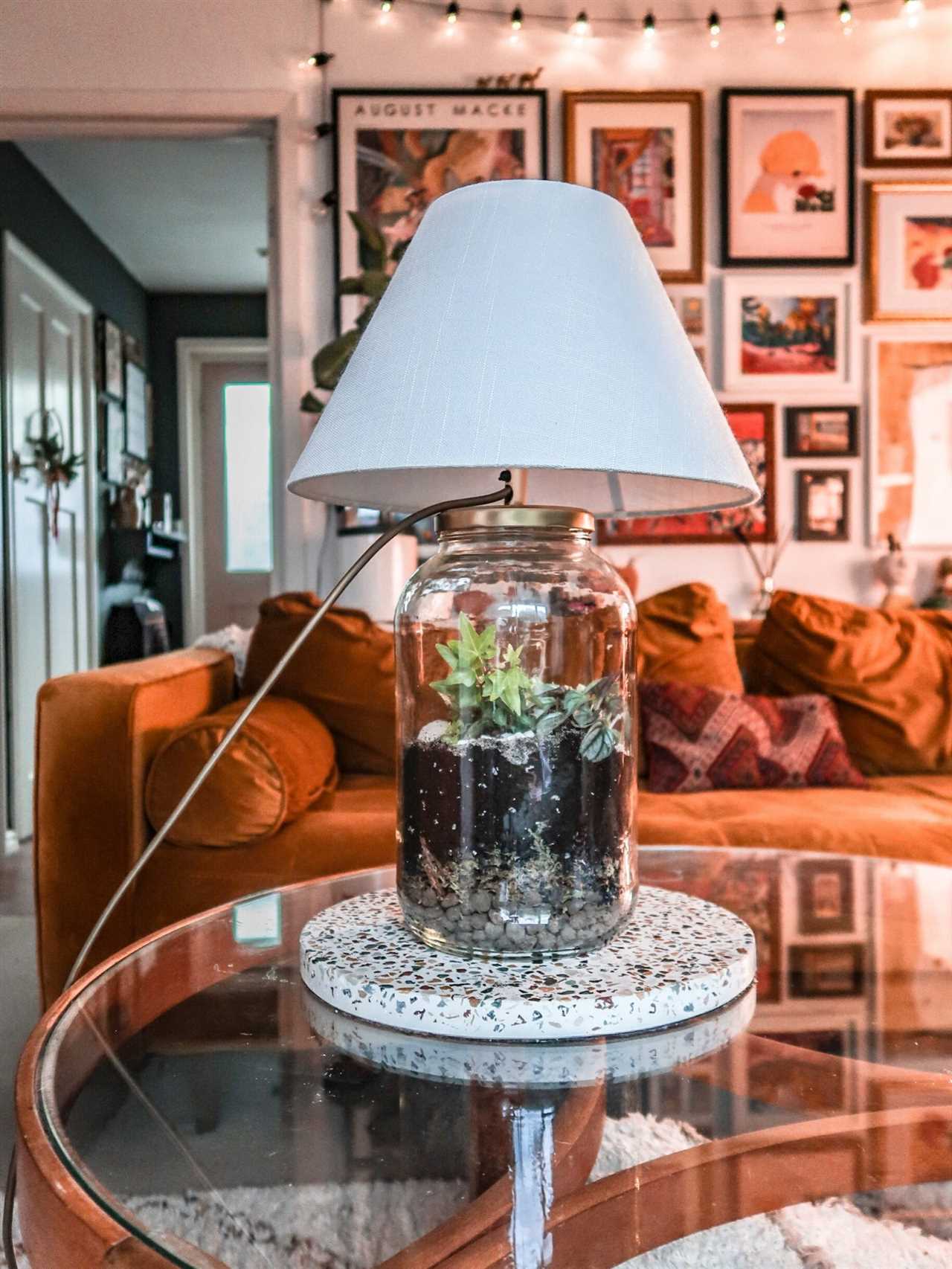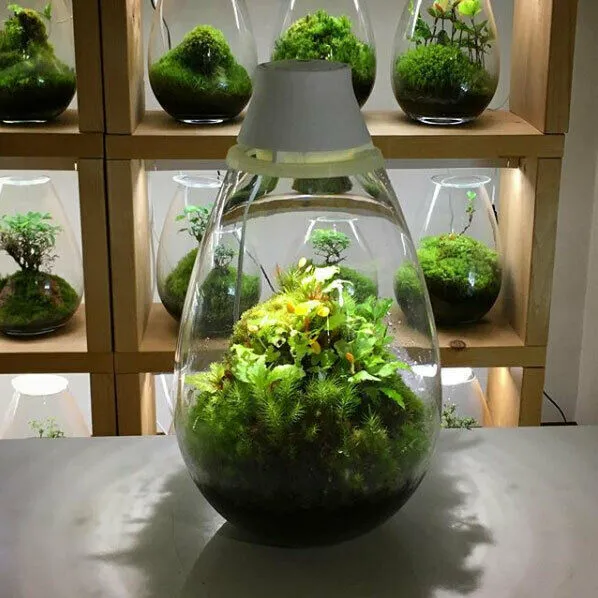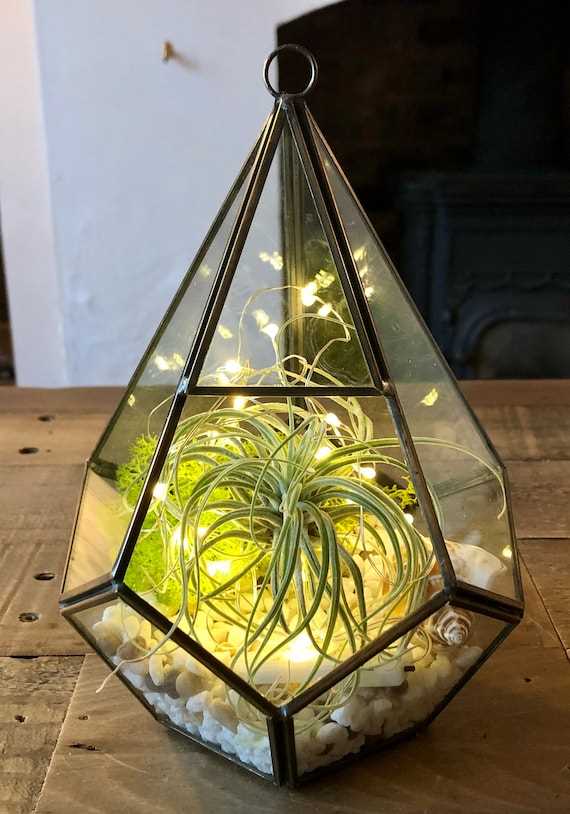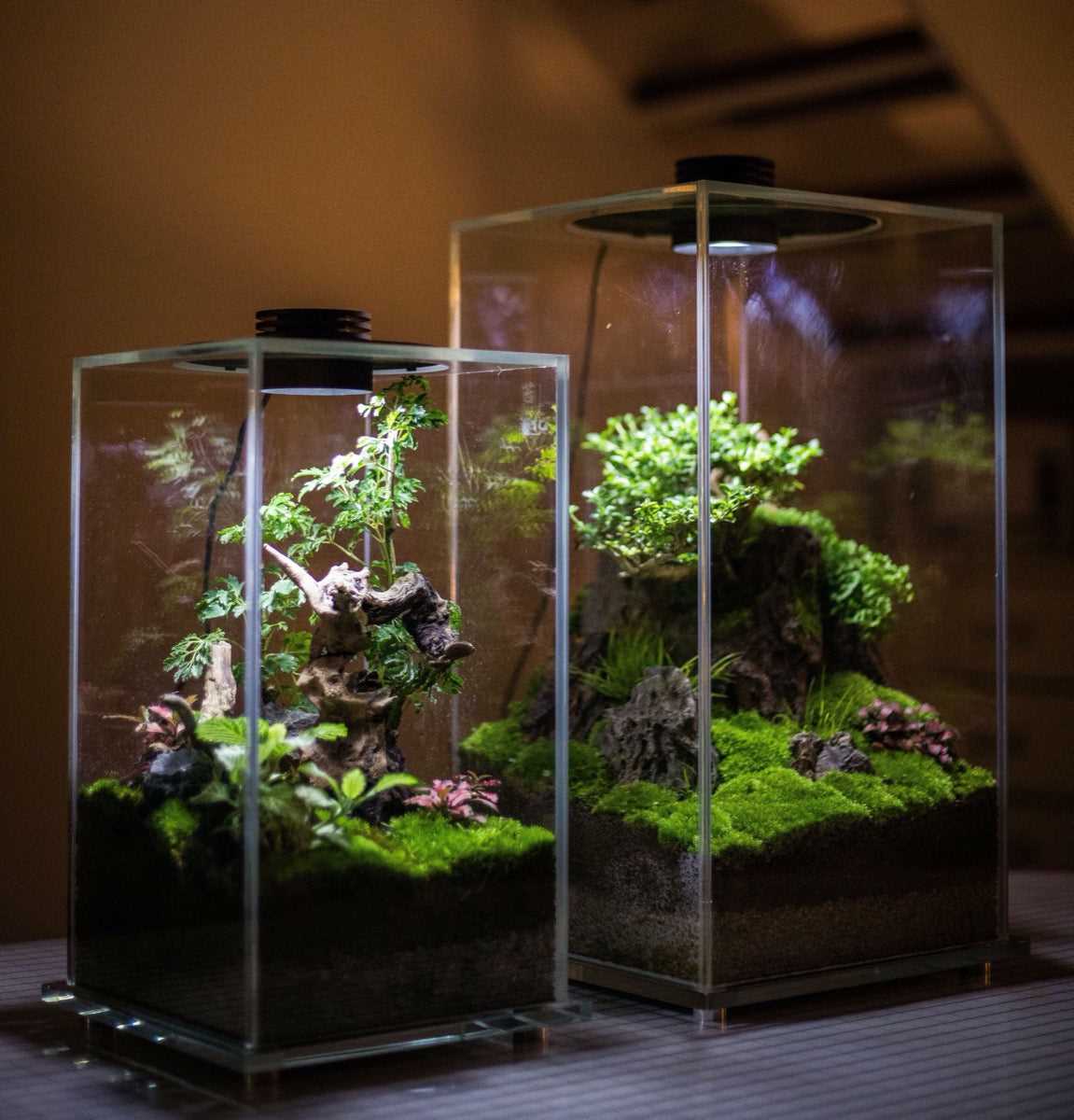Choosing the best lighting for your terrarium depends on the specific needs of your plants. LED bulbs are available in a range of colors and intensities, allowing you to customize the light according to the type of plants you have. Whether you have green leafy plants that require lower light levels or succulents that thrive in bright light, there is an LED lamp that suits your terrarium’s requirements.
Not only do LED lights promote plant growth, but they also have other advantages. LED bulbs have a longer lifespan compared to traditional bulbs, saving you money on replacements. Additionally, LED lights produce less heat, reducing the risk of overheating in your terrarium. This makes them a safe and efficient choice for indoor gardening.
When shopping for LED lights for your terrarium, look for bulbs that provide a full spectrum of light. Plants need both blue and red light for photosynthesis, as well as other wavelengths to support various growth stages. A full spectrum LED bulb will ensure that your plants receive all the necessary light for healthy development.
Proper lighting is crucial for the health and growth of plants in a terrarium. Just like outdoor plants need sunlight to photosynthesize and grow, indoor plants in a terrarium rely on artificial lighting to provide the necessary light energy. Without the right amount and quality of light, your terrarium plants may struggle to survive or fail to thrive.
Light is essential for plants as it enables them to convert carbon dioxide and water into glucose and oxygen through photosynthesis. This process helps plants produce the energy they need for growth, development, and reproduction. Additionally, light affects the morphology and physiology of terrarium plants, influencing their overall appearance and health.
Types of Terrarium Lighting Options
1. LED Grow Lights
LED (light-emitting diode) grow lights are a popular choice for terrariums due to their energy efficiency and long lifespan. These lights provide a full spectrum of light that closely mimics natural sunlight, making them ideal for promoting photosynthesis in plants. LED grow lights are also available in various color temperature options, allowing you to customize the lighting for different stages of plant growth.
2. Compact Fluorescent Lights (CFL)
CFL bulbs are another option for terrarium lighting. These bulbs are energy-efficient and produce a high-intensity light that is suitable for plant growth. CFL bulbs come in different wattages and color temperatures, allowing you to choose the right bulb for your specific terrarium needs.
3. Incandescent Lights
While incandescent lights are not the most energy-efficient option, they can still be used for certain terrarium setups. Incandescent bulbs emit a warm, yellow light that can provide a cozy glow to your terrarium. However, they may not provide enough light intensity for plants with high light requirements.
4. Fluorescent Tube Lights

By carefully selecting the right terrarium lighting option, you can create an optimal environment for your plants to thrive and grow. Whether you choose LED, fluorescent, or incandescent lights, make sure to provide the right amount and quality of light to promote healthy plant development and overall terrarium success.
Factors to Consider When Choosing Terrarium Lighting
1. Light Intensity

The intensity of light is an important consideration when choosing terrarium lighting. Different plants have different light requirements, so it is essential to select a light that provides the right intensity for your specific plants. Too much light can burn the plant’s leaves, while too little light can result in stunted growth.
2. Light Duration
The duration of light exposure is also crucial for the overall well-being of your plants. Most indoor plants require around 12-16 hours of light per day. You will need to choose a lighting option that allows you to control the duration of light exposure to mimic natural sunlight conditions.
3. Light Spectrum

The light spectrum refers to the range of wavelengths produced by the light source. Plants primarily require blue and red light for photosynthesis. Blue light promotes vegetative growth, while red light is crucial for flower and fruit development. Some lighting options, like LED lamps or bulbs, offer customizable light spectrums that can meet the specific needs of your plants.
4. Energy Efficiency
5. Heat Output
Some lighting options, such as incandescent bulbs, can produce a significant amount of heat. Depending on the size and ventilation of your terrarium, excessive heat can damage your plants. It is vital to choose a lighting option with minimal heat output or ensure proper ventilation to prevent heat buildup.
6. Cost
Overall, finding the right terrarium lighting is crucial for the success of your indoor plants. By considering factors such as light intensity, duration, spectrum, energy efficiency, heat output, and cost, you can ensure that your plants receive the optimal lighting conditions they need to thrive.
Tips for Properly Installing and Maintaining Terrarium Lighting

Proper installation and maintenance of terrarium lighting are crucial for the successful growth of green plants in indoor terrariums. Here are some tips to help you ensure that your terrarium lighting is set up correctly and well-maintained:
- Choose the right type of lighting: When selecting terrarium lighting, consider the specific needs of the plants you will be growing. LED lights are commonly used for terrariums due to their energy efficiency and ability to provide the right spectrum of light for plant growth. Look for LED bulbs that emit a full spectrum of light to support photosynthesis.
- Position the lamps properly: Place the lamps above the terrarium at a distance that allows for adequate light penetration. The light should be evenly distributed, covering all areas of the terrarium. Avoid positioning the lamps too close to the plants, as this can cause excessive heat and damage the foliage.
- Follow a suitable lighting schedule: Green plants require a balance of light and darkness for healthy growth. Mimic natural daylight cycles by providing 12-16 hours of light per day, followed by 8-12 hours of darkness. Use a timer to automate the lighting schedule and ensure consistency.
- Monitor the temperature: The heat emitted from terrarium lighting can raise the temperature inside the enclosed environment. Regularly check the temperature and make sure it stays within the optimal range for your plant species. If necessary, use cooling fans or adjust the lamp height to regulate the temperature.
- Clean the lamps regularly: Dust and debris can accumulate on the surface of terrarium lamps, reducing their efficiency. Clean the lamps with a soft cloth or a gentle cleaning solution to remove any dirt. Regular maintenance will ensure that the light output remains strong and consistent.
- Replace bulbs when needed: Over time, the light output of bulbs will diminish. Monitor the brightness of the terrarium lighting and replace the bulbs when they start to show signs of deterioration. Investing in high-quality LED bulbs will provide long-lasting performance and reduce the frequency of replacements.

I’m Lena Adams—a product of an unconventional upbringing in the African wilderness. My father, a daring explorer of African wildlife, sparked my fascination with reptiles, a passion that intertwined with the tragic loss of my mother during an expedition, leaving an indelible mark on my life. Driven to understand the creatures that captivated my parents, I embarked on my journey, sharing insights about reptiles, frogs, and lizards on my website. Through my explorations and conservation efforts, I honour my family’s legacy while seeking connections—to the creatures, nature, and the mother whose presence I yearn to understand.
